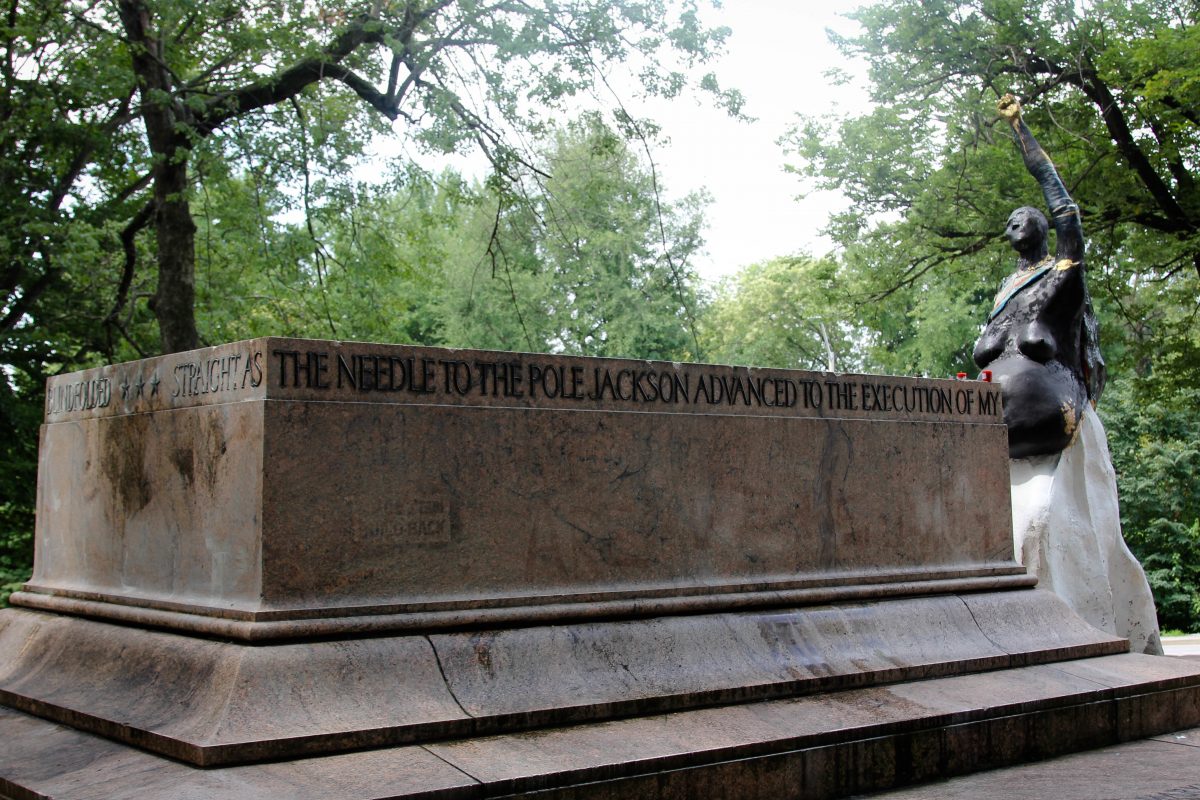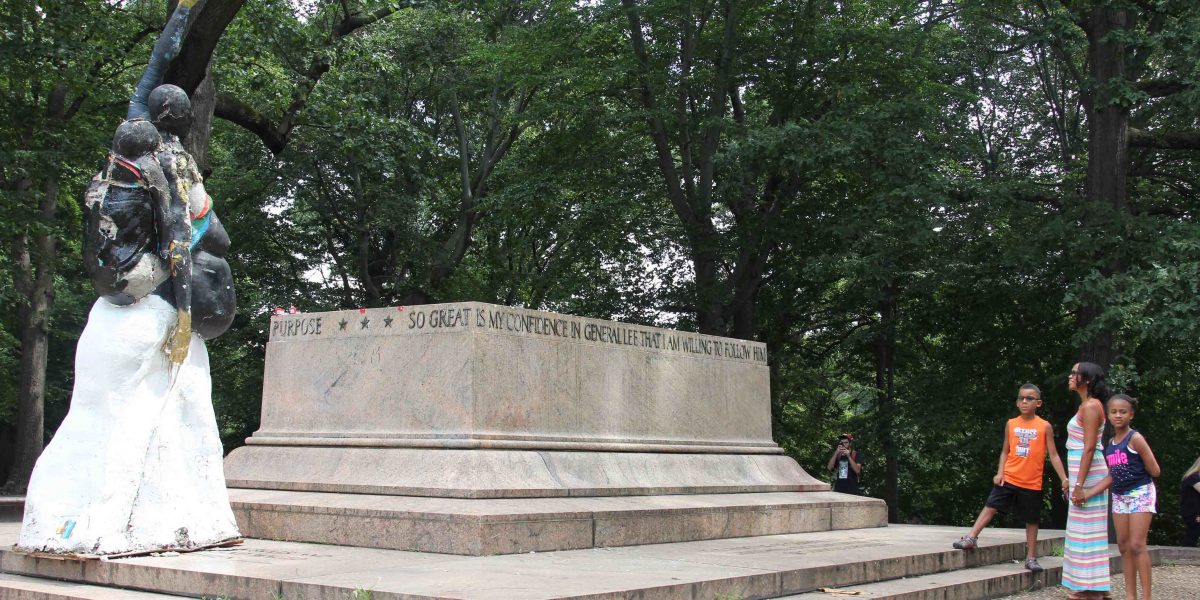
Herds of people flocked to Wyman Park this afternoon to snap a photo of the stone block that once housed the Lee-Jackson Confederate monument. Now all that remains is the memory of what was, and an adjacent 400-pound sculpture by artist Pablo Machioli, of a pregnant Black woman with her fist raised in an expression of protest.
Shortly before midnight, crews hired by the city removed the statues of Robert E. Lee and Thomas “Stonewall” Jackson on Wyman Park Drive, Confederate Soldiers and Sailors in Bolton Hill, Confederate Women near the Johns Hopkins University Homewood campus, and Roger B. Taney in Mt. Vernon from the stone slabs they’ve rested on for decades.
All of Baltimore's confederate monuments are gone. pic.twitter.com/a14QhTWI1d — Baynard Woods (@baynardwoods) August 16, 2017
CONGRATULATIONS, BALTIMORE! After midnight, city police made the rounds of parks and public squares to remove all Confederate statues! — Anne Frank Center (@AnneFrankCenter) August 16, 2017
The removal comes on the heels of Monday’s city council unanimous vote to immediately destroy the statues, as proposed by Councilman Brandon M. Scott. In a statement on Tuesday, Governor Larry Hogan also ordered the immediate removal of the Taney statue in front of the state house in Annapolis stating, “It’s the right thing to do.”
Citing events in #Charlottesville #Baltimore City Council adopts resolution calling for immediate destruction of confederate monuments #WBAL pic.twitter.com/9IiiGpfr99
— Vanessa Herring (@VanessaWBAL) August 14, 2017
In an effort to prevent future protest and vandalizing of the monuments, Pugh invoked her rights as mayor to “protect her city” and proceeded with the removal despite not receiving the approval of the Maryland Historical Trust Easement Committee.
“I thought there’s enough speeches being made,” she said in Wednesday’s press conference. “I’m not a person that takes a long time to get things done. Get it done.”
In the dead of night, presumably to try to avoid a repeat of #Charlottesville, Baltimore is removing controversial confederate statues. — James Cook (@BBCJamesCook) August 16, 2017
This afternoon, crowds at Wyman Park had a mix of relief, closure, anger, and appreciation in reaction to the absent statue. A young mother with her two children stood at the base of the pedestal with reflective stares as she explained the significance of the statue and its removal.

Clarinda Harriss, a 78-year-old Baltimore native and ancestor of Confederate soldiers, wrote a letter to Mayor Pugh and the city of Baltimore showing her appreciation for the removal, recalling a significant childhood memory at the Lee-Jackson monument.
“Sixty-nine years ago, when I was nine years old, I was dressed up in a yellow, polka dot dress and led up to the pedestal of the Lee-Jackson memorial to place a bunch of yellow roses there during the monument’s dedication,” Harriss says in the letter. “Today, I place roses on the pedestal in in praise of the city of Baltimore for its wise and discreet action last night in removing the statue. It was necessary . . . I am proud of Baltimore today.”
Pugh said that she did not know where the statues were moved to or where they would end up, but suggested that plaques should be installed to describe “what was there and why it was removed.”
then again, when the sun came up this morning, it's light shined down on a Baltimore free of Confederate statues. There's symbolism in that. — JOEY BALTIMORE (@charmcityjoe) August 16, 2017
